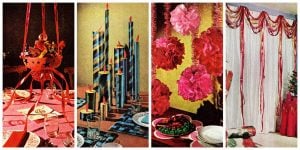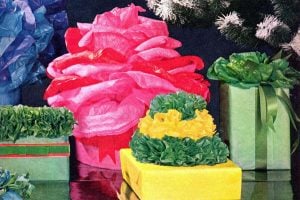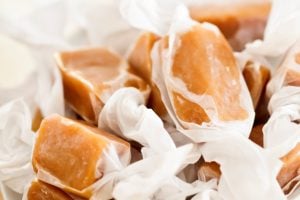The era’s most celebrated short hairstyles include the bouffant, the pixie cut and Bettie Page bangs. Women of the 1950s loved these looks for their blend of simplicity and glam, perfect for both the office and the dance floor.
Most popular 1950s hairstyles
The bouffant — made famous by movie stars — added volume and drama, defying the more conservative styles of earlier years.
Meanwhile, the pixie cut — popularized by icons like Audrey Hepburn — offered a bold, minimalistic appeal that broke fashion norms and celebrated individuality.
And of course, those bold, blunt Bettie Page bangs provided a daring edge to a feminine look.
The meticulous curls and calculated waves of short 50s hairstyles required skill, making hairstyling an art form in its own right — where women could craft a character and persona, expressing themselves in new ways in a society that was rapidly changing.
Below, we’ve brought you more than a dozen vintage photos and instructions direct from the 50s to help you recreate these retro looks. Whether you’re dressing up for a themed party or just want to add some classic flair to your everyday style, these cut and style guides will give you a real taste of 50s glam!

At home with your hair: Short 1950s hairstyles
By Dawn Crowell Norman, Beauty Editor of the Journal
With a home-permanent kit… a knack with scissors… and a way with ribbons and veilings, you can work at home to achieve a new and pretty hairdo.
At home with your hair: Summer short-cuts
Depending upon how short you wear your hair — and how quickly it grows — professional cutting and shaping are usually required from every three to six weeks. But for those in-between periods when ends become shaggy and unmanageable, here are some tips on trimming to help you maintain a well-groomed look all summer long.

How-to rules for short 1950s hairstyles
Before you follow the steps illustrated, read these rules:
1. If your hair is straight, or only has a slight natural curl, shampoo and dry before you begin. Hair that is naturally curly or unruly after a permanent is easier to trim when wet. In either case, leave the use of a razor to the experts.
2. Part your hair and comb it in the directions in which you wear it.

3. Use a pair of sharp, straight scissors and a three-way mirror to allow you to see exactly what you are doing.
4. When you section off your hair and slide your fingers out toward the ends (as illustrated), you will find the shortest ends of the section fall back into place against your head. This means they do not require trimming. Cut only the shaggy ends lying beyond your fingers, which may be anywhere from 1/4″ to 1/2″ in length.
5. The front and sides will, naturally, be easiest for you to do yourself. In the beginning, it is advisable (and more fun!) to have someone help you with the back.

Classic early short 1950s hairstyles for summer
Basic for a pretty summer hairdo; an off-the-brow, away-from-the-neck arrangement. This easy arrangement requires only the two rows of pin curls for the sides and back.

Tips for fair and cooler short 1950s hairstyles
The prettiest warm-weather hairdos are purposely planned to required a minimum of “doing.”
Regardless of length, they never lie limply on the neck or shoulders, but are shampooed regularly — and brushed, combed, or pinned into a serene arrangement. They take to any trick you may perform with a ribbon or flower — provided it isn’t fussy or overdone.
1. A yard of veiling over your face ties in bow at center back. Pin on flowers.
2. 1-1/2 yards of ribbon ties at the side, keeps the hair off of the face and neck.

Permanent and pretty short 1950s hairstyles
The model at the left gave herself a home permanent the day before her picture was taken. Her short cut called for seven curls on each side, ten in the back. “Just enough to look natural — and prevent my having to put up the ends at night.”

Want short 1950s hairstyles like this? Here are her permanent tips:
Read the directions each time you give yourself a permanent. They vary slightly with the manufacturer.
If your hair is short, give yourself your permanent just before it needs trimming. It’s easier to work with longer locks — and you can have too-tight curls trimmed and shaped.
If you work, an after-dinner permanent allows you to wake in the morning with a brand-new hairdo!
Plan your permanent a week before any special date. This gives you time for another shampoo and set to soften the effect.

1950s perm step-by-step
1. Test curl –major “must” for any permanent, to be pretty.
2. Perm only area of hair you wish to appear curly.

3. As you progress, recheck directions for following steps.
4. When you have finished the permanent, set in large, loose curls.

Reverse pin curls: How to create vintage curly & short 1950s hairstyles
For this cool arrangement, part hair on side and comb out smoothly. A row of reverse pin curls form waves at temples. The ends of the sides and back hair are set in forward curls.

Directions for the reverse pin curl hairstyle
1. For short front hair: section off 1″, going from part horizontally across had. Comb this forward.
2. Grasp section and slide fingers out from roots. Stop from 1/4″ to 1/2″ from ends. Trim ends.
3. For sides and back: part hair in 1″ vertical sections and repeat procedure described above.

Actress Elizabeth Taylor’s short brunette hairstyle (1950s)

Short blonde hairstyle for a bride (1950)

Glossy dark short hair (1950)

Cute 1950s short hairstyle with ribbons

50s woman with short brown hair in stylish perm

Vintage celebrity hairstyles for women from 1950
1950s actress Jane Powell’s short haircut
- Have long hair thinned out, contoured to the head and cut to about three inches below ears. Part hair at the left.
- Set hair on top of head in a loose, deep finger wave. If hair is not curly, use a wave lotion to set it and hold down with bobby pins.
- Set rest of hair in medium pin curls. When. dry, brush into soft, full curls,
- Comb forehead wave backwards. Brush hair upwards at temples and pin up for straight, clean line.
- Brush hair at the sides into a long, full curl — turning under, against the face.


50s hairstyle on actress Elizabeth Taylor
- Cut hair in short, wind-blown curls. Liz Taylor cuts her own natural curls, but straight hair would need professional trimming.
- For windblown effect, hair should be cut high around the neckline.
- Cut front hair in bangs which can be combed over forehead or to one side in deep, loose curl, depending on way hair is parted.
- If hair is straight or natural curl is too loose, set entire hair in small pin curls.
- For formal appearances, hair can be parted in center or at side and bangs brushed back into rest of hair.


Actress Jane Wyman’s haircut how-to
- Make a one-inch center part at top of head. Cut hair to short, straight bangs in front, about four inches from beginning of center part.
- Hair over ears should be only two inches long, shaping to four inches in back. Do not curl.
- Comb bangs straight down, merging into hair at both sides of the head.
- Comb back hair to a “V” at base of the skull. For sleek effect, trim any stray hairs.
- Brush hair around ears up and forward, keeping it to cap-like contour.


1950s actress June Allyson haircut details
- Part hair in center. Comb down in front, over face and cut bangs to half-forehead length.
- Rest of hair should be cut “bluntly,” not “feathered,” to give cap effect. Set bangs in two large pin curls.
- Set rest of hair in large, loose pin curls. June never uses more than six curlers on her hair.
- Allow to dry naturally. Then brush (do not comb) hair out and up to give ends a soft, upward curl.
- Cup hair softly over ears. Brush bangs to right and left for casual, fluffy effect.


Vintage 1950s hairstyle on actress Pat Neal
- Part hair at left. Cut “bluntly,” do not ‘“feather.” This gives fine hair body.
- Cut hair eight inches from the crown to end of “bob” in back, straight at the neckline but tapering to one-and-a-half inches in front.
- Comb lock of hair over forehead and set in large pin curl. Set hair over ears in one loose pin curl at each side, leaving back of hair straight.
- Comb hair straight in back, bringing to slight curl at the sides.
- Comb forehead hair into soft, deep curl, turned under, for bang effect. Best way is to comb hair over whole hand and hold down against forehead.


1950s actress Barbara Stanwyck haircut diagrams
- Part hair at the side. Cut to contour of head, just below the ears.
- Set front hair in large pin curls, with medium size pin curls at the sides.
- Set back hair in large flat curls, not too tight, for full, wide waves.
- Brush out vigorously so that hair falls naturally. Brush hair up and over on either side of forehead, cupping slightly forward on the cheeks.
- For loose bang effect, part front hair in three sections, combing each section down and around toward part.





















